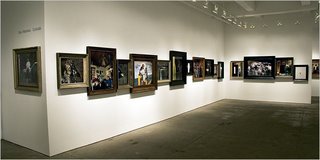
Adobe posted a beta version of Photoshop CS3 last week and the reviews are streaming in. It certainly adds a great deal of speed to the application on my MacIntel desktop, others running PPC G5's have lackluster reviews.
Photoshop CS3 download page
Martin Evening's "What's New in Photoshop CS3" (PDF)
John Nack's Adobe Blog
Scott Byer's Adobe Blog
Adobe Photoshop CS3 Forum
Wayne Crosshall's review of Bridge CS3
Wayne Crosshall's review of Adobe Camera Raw CS3
Late breaking news of problems @Macfixit











